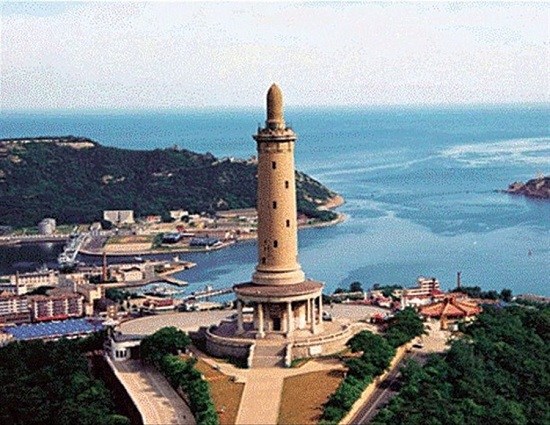Natural beauty abounds in Dalian
 0 Comment(s)
0 Comment(s) Print
Print E-mail Shanghai Daily, March 10, 2016
E-mail Shanghai Daily, March 10, 2016
|
|
|
National Park |
Dalian has long been a marine gateway for northeast China's Liaoning Province. The Dalian Binhai & Lushunkou Port scenic area features a picturesque coastal highway and a natural port zone of 105 square kilometers.
Built in the 1970s, Binhai Road was originally a strategic coast highway intended for military use. But as more peaceful times led to a decline in its military significance, the road was opened to tourist traffic in the early 1980s after the late Chinese leader Deng Xiaoping visited the area.
The 45km-long Binhai Road features rolling forest-covered hills on one side and a misty rock-and-reef strewn ocean view on the other.
Popular stopping sites along the route include the Beidaqiao Bridge (Great North Bridge), Yanwoling Hill (Swallow Nest Hill) and Xiuyuefeng Park (Charming Moon Peak). There are also a number of beaches along the coast where water sports lovers can go swimming, surfing or boating.
Home to an astonishing array of lotus-shaped rock formations jutting out of crystal clear waters, the Baiyun Shanzhuang (White Cloud Valley) is often referred to as a "stone forest at sea," similar to the karst terrain found in south China's Yunnan Province.
To the west end of Binhai Road, Lushunkou, also known as "Port Arthur," became part of the Dalian scenic area in 1988. Skirted on three sides by both the Yellow and Bohai seas, it is a charming natural port rich in natural resources as well as historical heritage.
Lushunkou is the northernmost ice-free port in China. It has been of military importance since as early as the Eastern Jin Dynasty (AD 317-420).
In 1894, during the Sino-Japanese War, the Japanese army captured Lushun. The area suffered again in 1904, when it became a major battlefield during the Russo-Japanese War. Lushun endured Japanese rule for more than 40 years following the surrender of the Russian forces. It was not until 1945 that Lushun was returned to China.
Today, Lushunkou boasts a collection of war-time relics and colonial buildings. There are also monuments and memorials where visitors can honor those who died fighting Fascism.
Several small islands off the coast of Lushunkou are known for their uniqueness, serenity and beautiful scenery. The Island of Snakes, for instance, is home to thousands of snake as well as snake research base. Nearby is a volcano called Laotie Hill, which is a stopping spot for millions of migratory birds that come to Lushun each spring and autumn.




 Add your comments...
Add your comments...


